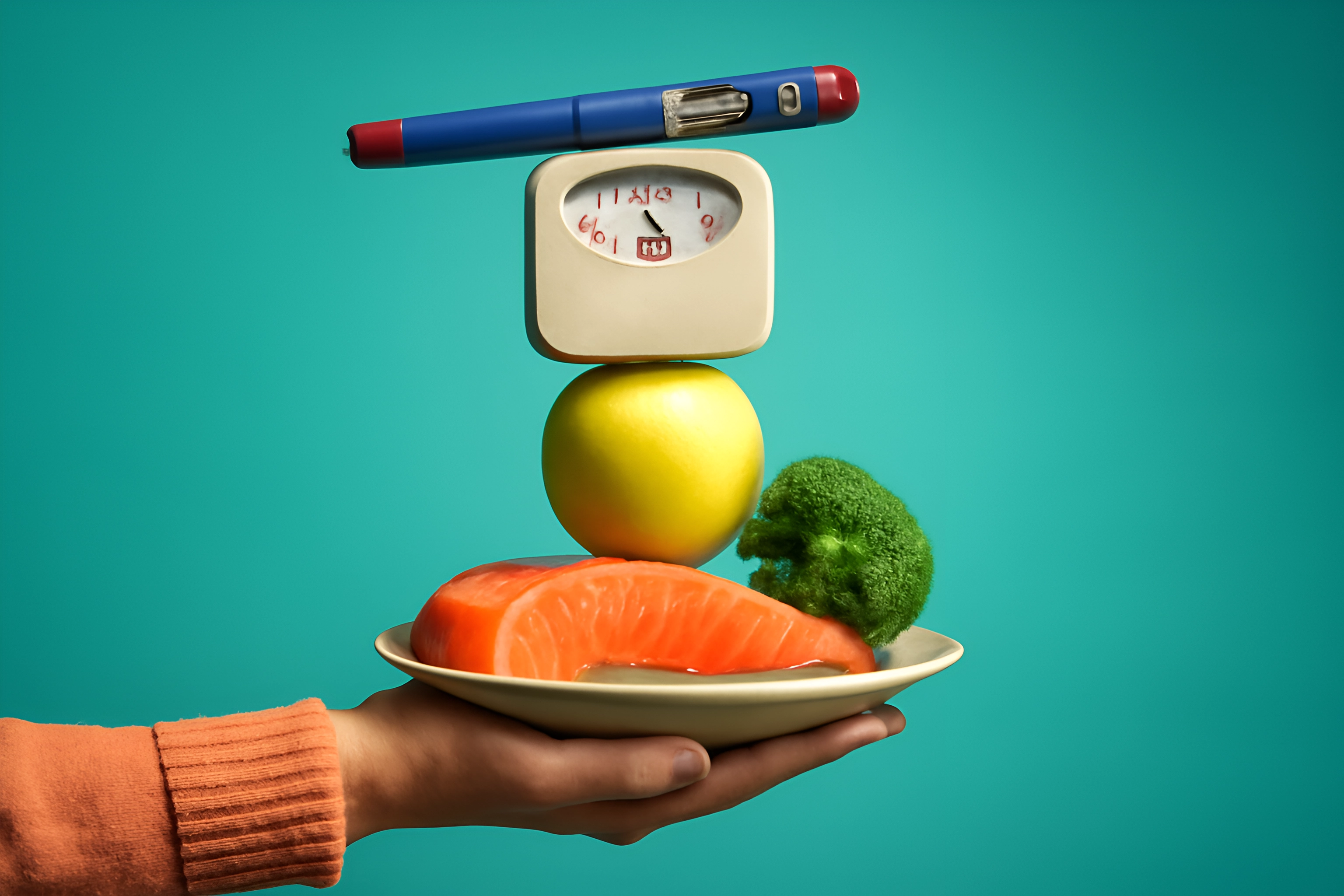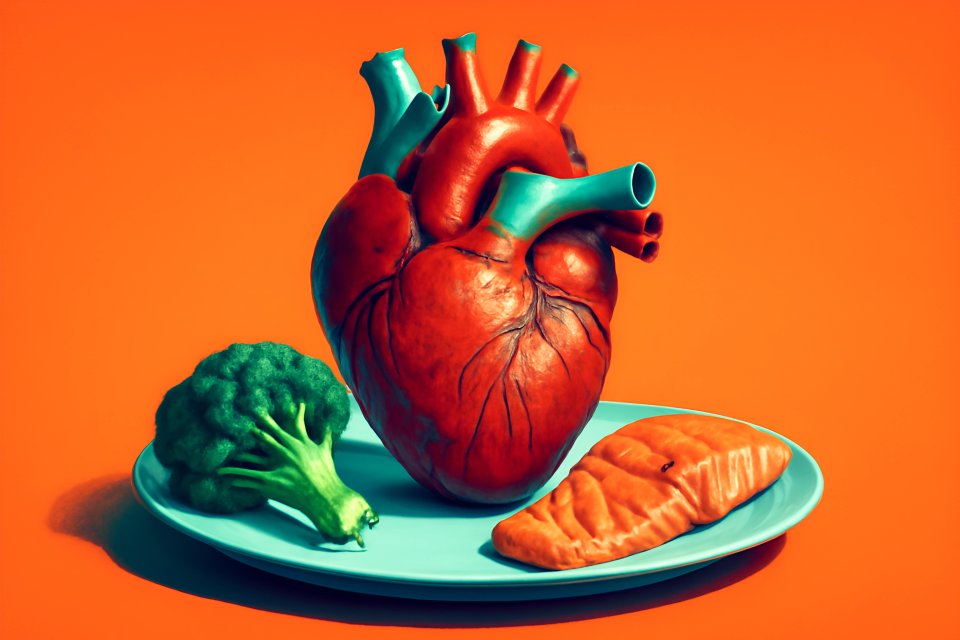
Food Freedom, Not Restriction
Receiving a diabetes diagnosis after 50 can feel like your food freedom has been stolen away. Suddenly, the meals you’ve enjoyed for a lifetime are under scrutiny, and the future can look like a life sentence of bland, boring food. But what if we told you that managing your health is less about restriction and more about rediscovering the power of balanced, delicious food?
The confusion is real. You're bombarded with conflicting advice, worried about every single bite, and overwhelmed by the fear of high blood sugar. It’s enough to make anyone want to give up before they even start.
At FitOverFifty, we believe in empowerment, not deprivation. This isn't another fad diet guide; it's your roadmap to creating a sustainable, enjoyable relationship with food that fuels your body and supports your long-term health. In this guide, we’ll walk you through the essentials of balanced meal planning for seniors with diabetes, focusing on simple strategies that work for your lifestyle.
Why Your Nutritional Needs Change and How It Affects Blood Sugar
Understanding the "why" behind your new eating plan is the first step toward taking control. After 50, our bodies change; metabolism can slow down, and the way we process sugars isn't as efficient as it once was. This makes managing blood sugar a top priority for both energy and long-term wellness.
Think of your blood sugar like a steady, flowing river, not a volatile rollercoaster. The right combination of foods provides a slow, consistent release of energy, keeping you feeling vibrant all day long. According to health experts at Bethesda Health Group, a diet lower in carbohydrates but rich in lean proteins and whole grains can significantly slow the release of glucose into the bloodstream, preventing those sharp spikes and crashes that leave you feeling drained.
This balance is also critical for protecting your heart and maintaining your strength. Uncontrolled blood sugar can impact cardiovascular health, a major concern for our community. Furthermore, as the National Institute on Aging highlights, getting enough protein is vital for older adults to maintain muscle mass, which is the engine of your metabolism.
The Easiest Way to Build a Balanced Plate (No Complicated Counting!)
Forget the complicated calorie counting and confusing spreadsheets. The single most powerful tool in your arsenal is a simple, visual one: The Plate Method. Recommended by organizations like the National Council on Aging, this approach helps you build a perfectly balanced meal every single time, just by looking at your plate.
Fill Half Your Plate with Non-Starchy Vegetables
This is your foundation for vibrant health. Non-starchy vegetables are packed with fiber, vitamins, and minerals, and they have a very low impact on your blood sugar. They fill you up without weighing you down, giving you the nutrients your body craves.
Think color and variety. Load up on leafy greens like spinach and kale, crunchy broccoli and cauliflower, vibrant bell peppers, and crisp asparagus. The more color you see, the wider the range of nutrients you're getting.
Fill a Quarter of Your Plate with Lean Protein
Protein is your partner in stable energy and strength. It promotes a feeling of fullness, which helps prevent overeating, and it’s essential for maintaining the muscle mass that keeps your metabolism humming. A protein-rich meal helps blunt the absorption of sugar, preventing those dreaded energy spikes.
Choose high-quality, lean sources to power your day. Think grilled chicken or turkey, baked fish rich in omega-3s like salmon, or plant-based powerhouses like tofu, lentils, and beans. These choices support both your blood sugar and your heart.
Fill the Final Quarter with Complex Carbohydrates
Carbohydrates are not the enemy—they are your body's primary source of fuel. The secret is choosing the right kind of carbs that provide sustained, long-lasting energy. This is where our low glycemic nutrition tips for seniors come into play; you want to choose carbs that release their energy slowly, like slow-burning logs on a fire.
Instead of white bread or sugary cereals, opt for nutrient-dense complex carbohydrates. Think hearty quinoa, earthy sweet potatoes, wholesome brown rice, and steel-cut oatmeal. These foods are rich in fiber, which further slows down sugar absorption and keeps you feeling satisfied for hours.
Add a Dash of Healthy Fats
A small amount of healthy fat is the finishing touch on a perfectly balanced plate. These fats are absolutely essential for brain function, heart health, and helping your body absorb important vitamins. They also add incredible flavor and satisfaction to your meals.
Incorporate sources like creamy avocado, a drizzle of extra-virgin olive oil on your salad, or a small handful of nuts and seeds. These fats are a delicious way to invest in your long-term well-being.
Smart, Simple Tips for Long-Term Success
Knowing what to eat is one thing; making it a sustainable part of your daily life is the real victory. Your strategy for diabetic meal prep over 50 shouldn't be complicated. It should be about making smart, simple choices that set you up for success without adding stress to your life.
Cook Once, Eat Twice
Embrace the power of batch cooking. Roasting a large tray of vegetables, grilling several chicken breasts, or cooking a pot of quinoa at the beginning of the week gives you versatile, healthy building blocks for quick meals later. This simple habit removes the guesswork and makes a healthy choice the easy choice when you're tired or busy.
The Smart Snack Arsenal
Snacking isn't off-limits; it's a strategic tool to keep your blood sugar stable between meals. The key is to have blood-sugar-friendly options ready to go. Stock your kitchen with hard-boiled eggs, individual containers of plain Greek yogurt, pre-portioned almonds, or apple slices with a spoonful of natural peanut butter.
Hydration is Non-Negotiable
Water is one of the most overlooked tools for health management. Staying properly hydrated helps your kidneys flush out excess sugar and supports your overall metabolic function. Keep a water bottle with you throughout the day as a constant reminder to sip your way to better health.
Flavor Without the Spike
One of the biggest fears is that a diabetic-friendly diet will be bland. It's time to bust that myth by becoming a master of flavor. Use fresh herbs, dried spices, zesty citrus juices, and flavorful vinegars to make your food taste incredible without relying on sugar, excess salt, or high-calorie sauces.
Mindful Grocery Shopping
Your journey to a healthy meal begins in the grocery store. Become a savvy label reader by focusing on a few key numbers. Pay close attention to the total carbohydrates, fiber, and especially the added sugars on nutrition labels to make informed choices that support your goals.
Putting It All Together: A Sample Meal Plan
So, what does this look like in a real day of eating? This isn't a strict prescription, but rather an inspiring example of how delicious, satisfying, and balanced your meals can be. This approach, as noted in a 7-day diabetes meal plan from Medical News Today, is about creating a sustainable pattern of healthy eating.
| Meal | Sample Dish | The Balanced Plate Breakdown |
|---|---|---|
| Breakfast | Scrambled eggs with spinach and a slice of whole-grain toast. | Protein + Non-Starchy Veggies + Complex Carb |
| Lunch | Large salad with grilled salmon, mixed greens, and an olive oil vinaigrette. | Protein + Non-Starchy Veggies + Healthy Fat |
| Dinner | Chicken and vegetable stir-fry with a small portion of brown rice. | Protein + Non-Starchy Veggies + Complex Carb |
| Snack | Plain Greek yogurt with a handful of blueberries and walnuts. | Protein + Low-Glycemic Fruit + Healthy Fat |
Your Health is a Journey, Not a Destination
Let's be clear: perfection is not the goal. This is about progress and building habits that serve you for a lifetime. By embracing the Plate Method, focusing on whole foods, and making small, sustainable changes, you are taking powerful steps to reclaim your health.
Managing diabetes is an act of profound self-care. By embracing balanced meal planning, you're not just controlling your blood sugar—you're investing in your energy, your vitality, and a future filled with health and joy. You've got this.
Take the Next Step
What is your go-to diabetic-friendly meal? Share your ideas in the comments below to inspire our community!
Ready to get moving? Pair your healthy eating with our guide to The Best Low-Impact Exercises for Seniors.












